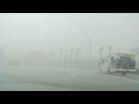(Press-News.org) (SALT LAKE CITY)—Scientists at the University of Utah (U of U), the University of Texas MD Anderson Cancer Center in Houston and colleagues have developed a powerful tool called pVAAST that combines linkage analysis with case control association to help researchers and clinicians identify disease-causing mutations in families faster and more precisely than ever before.
In a study in Nature Biotechnology, the researchers describe cases in which pVAAST (the pedigree Variant Annotation, Analysis and Search Tool) identified mutations in two families with separate diseases and a de novo or new variation in a 12-year-old who was the only one in his family to suffer from a mysterious and life threatening intestinal problem.
"Linkage analysis and case control association traditionally have been used to find gene mutations," says Chad Huff, Ph.D., corresponding author on the study, assistant professor of epidemiology at the MD Anderson Cancer Center and former postdoctoral fellow in human genetics at the U of U. "Bringing those methods together provides a strong increase in the power to find gene variations that cause disease."
The advent of genome sequencing has allowed researchers to search for disease-causing mutations in the genomes of individual patients, larger groups of unrelated people or small and large families. The researchers in this study believe the most powerful way to identify these variants is by sequencing the genomes of families that experience unusually high occurrences of a particular illness. By identifying gene variations that family members share, it's possible to identify mutations in a gene that causes the disease, according to Mark Yandell, Ph.D., U of U professor of human genetics and a senior author on the paper.
"The issue with whole genome sequences has been that sequencing one person's genome to find a single disease-causing gene is difficult," Yandell says. "If you can sequence the whole family it gives a fuller picture of the sequence and variations potentially involved in disease."
Humans carry two healthy copies of each gene in the body. But mutations in a gene can cause disease or other health problems. These mutations occur randomly and rarely, but once they happen in a family member, they are often passed down to subsequent generations.
pVAAST was designed to search the sequenced genomes of families to find shared mutations and thus identify the gene with the highest probability of causing disease. Unlike other gene-finding tools, pVAAST accounts for people being related as it searches for gene variations that have the highest probabilities of causing disease. A big advantage of pVAAST, according to Huff and Yandell, is its ability to simultaneously search multiple families with the same disease to find mutations; this reduces the amount of time and effort to find a disease-causing variant. For example, if three families have the same disease, two might have different mutations damaging the same gene, while the third family might have a different damaged gene. "pVAAST has the power to determine the true disease-causing mutations across all those families in one analysis," Yandell says.
In related work, Yandell, Huff, and their colleagues vastly improved the results of individual and small family sequencing by developing another gene-finding tool, Phevor (Phenotype Driven Variant Ontological Re-ranking tool), which combines the probabilities of mutations being involved with a disease with databases of phenotypes and information on gene functions. In doing this Phevor and pVAAST in combination can identify disease genes with much greater precision than other tools.
Sequencing genomes of unrelated patients with the same disease also increases the ability to find gene variations, and a third software tool Yandell and colleagues developed, VAAST (Variant Annotation, Analysis and Search Tool), has greatly advanced the speed and precision of doing that.
If VAAST or pVAAST can't identify the mutation most likely to cause a disease, Phevor can take the results from those tools and combine them with a description of the patients' disease called a 'phenotype' to find the most likely causative gene.
"We hope that in developing pVAAST, we and other researchers can more rapidly identify genetic variations influencing disease risk by increasing the statistical power of familial genome sequencing," Huff says.
INFORMATION:
This study is a collaboration of several institutions in the United States and one in Europe. Lynn B. Jorde, Ph.D., U of U professor and chair of human genetics and Martin Reese, Ph.D., CEO of Oakland, Calif.-based Omicia, are senior authors. Leroy Hood, M.D., Ph.D., of the Institute for Systems Biology in Seattle, is a co-author as is Stephen L. Guthery, M.D., U of U professor of pediatrics who referred a patient and his family for the study, and Hilary Coon, Ph.D., research professor of psychiatry at the University of Utah School of Medicine.
Powerful tool combs family genomes to find shared variations causing disease
2014-05-29
ELSE PRESS RELEASES FROM THIS DATE:
Ecosystem services: Looking forward to mid-century
2014-05-29
(Santa Barbara, Calif.) — As population grows, society needs more — more energy, more food, more paper, more housing, more of nearly everything. Meeting those needs can lead to changes in how land is used.
Native grasslands, forests and wetlands may be converted into croplands, tree plantations, residential areas and commercial developments. Those conversions can, in turn, diminish the health of natural ecosystems and their ability to provide an array of valuable services, such as clean air and water, wildlife and opportunities for recreation, to name a few.
In two ...
Study: Baltimore hookah bars contain elevated levels of carbon monoxide and air nicotine
2014-05-29
Smoking waterpipes, or hookahs, creates hazardous concentrations of indoor air pollution and poses increased risk from diminished air quality for both employees and patrons of waterpipe bars, according to a new study from the Institute for Global Tobacco Control at the Johns Hopkins Bloomberg School of Public Health. In an analysis of air quality in seven Baltimore waterpipe bars, researchers found that airborne particulate matter and carbon monoxide exceeded concentrations previously measured in public places that allowed cigarette smoking and that air nicotine was markedly ...
Solar panel manufacturing is greener in Europe than China, study says
2014-05-29
Solar panels made in China have a higher overall carbon footprint and are likely to use substantially more energy during manufacturing than those made in Europe, said a new study from Northwestern University and the U.S. Department of Energy's Argonne National Laboratory. The report compared energy and greenhouse gas emissions that go into the manufacturing process of solar panels in Europe and China.
"We estimated that a solar panel's carbon footprint is about twice as high when made in China and used in Europe, compared to those locally made and used in Europe," said ...
Study links unexpected death of a loved one with onset of psychiatric disorders
2014-05-29
May 29, 2014 -- The sudden loss of a loved one can trigger a variety of psychiatric disorders in people with no history of mental illness, according to researchers at Columbia University's Mailman School of Public Health and colleagues at Columbia's School of Social Work and Harvard Medical School. While previous studies have suggested there is a link between sudden bereavement and an onset of common psychiatric disorders, this is the first study to show the association of acute bereavement and mania in a large population sample. Findings are published online in the American ...
Domestication of dogs may explain mammoth kill sites and success of early modern humans
2014-05-29
A new analysis of European archaeological sites containing large numbers of dead mammoths and dwellings built with mammoth bones has led Penn State Professor Emerita Pat Shipman to formulate a new interpretation of how these sites were formed. She suggests that their abrupt appearance may have been due to early modern humans working with the earliest domestic dogs to kill the now-extinct mammoth -- a now-extinct animal distantly related to the modern-day elephant. Shipman's analysis also provides a way to test the predictions of her new hypothesis. Advance publication of ...
NASA widens 2014 hurricane research mission
2014-05-29
VIDEO:
During this year's Atlantic hurricane season, NASA is redoubling its efforts to probe the inner workings of hurricanes and tropical storms with two unmanned Global Hawk aircraft flying over storms...
Click here for more information.
During this year's Atlantic hurricane season, NASA is redoubling its efforts to probe the inner workings of hurricanes and tropical storms with two unmanned Global Hawk aircraft flying over storms and two new space-based missions.
NASA's ...
Mechanisms of ibrutinib resistance identified in chronic lymphocytic leukemia
2014-05-29
COLUMBUS, Ohio – A new study has discovered how resistance develops in patients taking ibrutinib, a new and highly effective drug for the treatment of chronic lymphocytic leukemia (CLL).
The study was published in the New England Journal of Medicine and led by researchers at The Ohio State University Comprehensive Cancer Center – Arthur G. James Cancer Hospital and Richard J. Solove Research Institute (OSUCCC – James). It identifies gene mutations that cause ibrutinib resistance in CLL patients.
"Knowledge of these mutations is the first step in the development of ...
New tools help protect world's threatened species
2014-05-29
Athens, Ga. – New tools to collect and share information could help stem the loss of the world's threatened species, according to a paper published today in the journal Science. The study—by an international team of scientists that included John L. Gittleman, dean of the University of Georgia Odum School of Ecology—was led by Stuart L. Pimm of Duke University and Clinton N. Jenkins of the Instituto de Pesquisas Ecológicas in Brazil.
"As databases coalesce and policymakers have access to greater information, we see real and improving successes for conservation science," ...
Two GOES-R instruments complete spacecraft integration
2014-05-29
VIDEO:
In addition to monitoring weather on Earth, the GOES-R satellites will monitor weather in space caused by electromagnetic radiation and charged particles released from solar storms on the Sun. Many...
Click here for more information.
Two of the six instruments that will fly on NOAA's first Geostationary Operational Environmental Satellite - R (GOES-R) satellite have completed integration with the spacecraft. The Solar Ultraviolet Imager (SUVI) and Extreme Ultraviolet and ...
New report details more geoscience job opportunities than students
2014-05-29
Alexandria, Va. – In the American Geosciences Institute's newest Status of the Geoscience Workforce Report, released May 2014, jobs requiring training in the geosciences continue to be lucrative and in-demand. Even with increased enrollment and graduation from geoscience programs, the data still project a shortage of around 135,000 geoscientists needed in the workforce by the end of the decade.
"Industry has recognized, and is mitigating the upcoming shortage of skilled geoscientists in their employ, but the federal geoscience workforce is still demonstrably shrinking" ...





